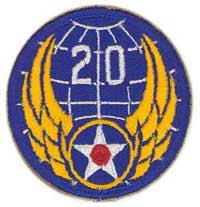
I will touch only briefly on the actual bombing, and Paul Tibbets, as this information is well known. This particular plane was among a group of fifteen B-29's selected by Tibbets at the Martin, Omaha plant. These planes , plus 1800 men would comprise the top secret group which would be known as the 509th Composite Group, and would be temporarily stationed at Wendover, Utah. This was a remote and secure location where they would practice until they were ready for their unknown extraordinary experience which was to follow. The 509th moved to the island of Tinian in the Marianas which had a very desirable 8500 foot runway. On July 26, 1945, the cruiser Indianapolis delivered a large wooden crate. It is frightening to think of how close we came to not even having the bomb. Four days after leaving Tinian, the Indianapolis was sunk by Japanese subs, killing nearly 900 men. The ships captain, McVay, was court martialed for failure to follow evasive maneuvers in a highly controversial finding. Never able to clear his name, he committed suicide.
Finally, by early August,1945, the group was ready to undertake the still unknown mission. A group of seven B-29's was formed. Three weather planes would proceed ahead of the Enola , which would be accompanied by a photo plane, and one loaded with blast measuring instruments. Another plane would be used as a standby. August 6, 1945, was designated "drop day". The Enola had been loaded with the 9000 pound "Little Boy" which possessed the power of 15,000 tons of TNT. The Enola would not take off with the bomb armed, so Deak Parsons would arm the bomb in flight, a most risky procedure. After take off at 2:30AM they climbed to 30,700 feet. The weather planes which proceeded ahead of the Enola radioed that conditions over Hiroshima were acceptable, and Col. Tibbets gave his crew the word "It's Hiroshima". At 9:15 AM the Enola dropped the "Little Boy", and made her diving 155 degree turn to the right, and waited. The bomb exploded 1890 feet above the ground, with the mushroom cloud rising above 45,000 feet. The Japanese were given an ultimatum calling for an unconditional surrender, or face further attacks. Three days later the B-29 Bocks Car piloted by Chuck Sweeney dropped the second bomb on Nagasaki. The unconditional surrender by the Japanese occurred on Aug 15, 1945.